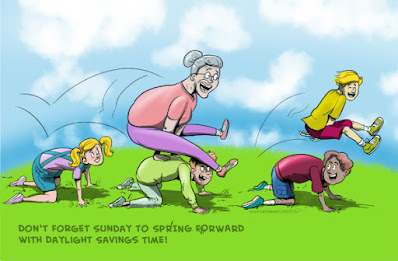credits: Jim Hunt
Reprieve from the long hours of darkness is just around the corner, when spring brings with it Daylight Saving Time and the turning forward of the clocks.
Although it means one less hour of sleep, the increase in daylight will feel worth it in the long-run.
In the US and Canada the clocks gone forward last 8 March at 2am.
In Europe will go forward tonight Sunday, 29 March at 1am. Most countries in The European Union (EU) and other European countries will spring forward one hour at 01:00 UTC on March 29, 2020. Local time for the change is different in each time zone.
To make the time change easier, which can take your body up to a week to adjust to.
The human circadian clock is actually a little longer than 24 hours, so it’s easier for us to stay up later than to fall asleep earlier in relation to our usual bedtime.
Isn’t the easiest sell for children. You can probably already anticipate what’s going to happen for several nights after it occurs: It won’t be dark at your child’s bedtime and it will “feel” much earlier to him, so your youngster will battle you at bedtime. There are a few things you can do today to make this transition easier for both you and your child.
credits: Getty Images
https://www.gettyimages.com/
And now, time to the review of the most popular posts of February...
Here are the most popular posts of the last month:
If you live in Europe, don't forget at 1am. Spring Forward!
Hoping you're enjoying to teach online. Your students need you! It's fun to teach online. I love it!
The most important message: #StayHome
Stay safe! We need hope and resilience all over the world! And be kind to those we need you.
G-Souto
28.02.2020
Copyright © 2020G-Souto'sBlog, gsouto-digitalteacher.blogspot.com®

February in Review & DST Spring Forward ! #StayHome by G-Souto is licensed under a Creative Commons Attribution-NonCommercial-NoDerivatives 4.0 International License.





No comments:
Post a Comment